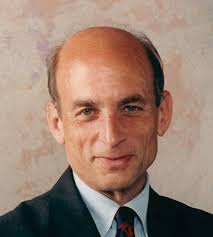Aristides N. Hatzis (University of Athens) has a fairly new blog, and it has an interesting post by Russell S. Sobel on Sobel’s and Brian Osaba’s article Youth Gangs as Pseudo-Governments. Here’s the abstract:
We hypothesize the failure of government to protect the rights of individuals from violence committed by youths has led to the formation of youth gangs as protective agencies. Our theory predicts an opposite direction of causality between gang activity and violent crime than is widely accepted. While areas with more gang activity also have more violence, our theory suggests gangs form as protection agencies precisely in areas with high violent crime rates. While gangs, like governments, use violence to enforce rules, the net impact of gangs is to lower violent crime. We test this hypothesis and offer significant policy implications.
The blog post and paper make two important points.
First, they connect to other work on how government-type institutions can arise spontaneously out of anarchy, including James Buchanan’s “A Defense of Organized Crime” (1973). The references are a good bibliography on the subject, except they do not include Peter Leeson’s wonderful recent The Invisible Hook (but they do cite some older Leeson papers).
Second, unless governments understand these private pseudo-governments, their efforts to reduce violence may go awry. As Sobel says in the blog post, “[t]he surprising implication of our insight is that efforts to reduce gang activity could actually increase violent crime.” My colleague Nuno Garoupa’s The Economics of Organized Crime and Optimal Law Enforcement (38 Economic Inquiry, no. 2, 278-288) hits another aspect of this: as law enforcement increases, so does competition with gangs, so violence increases. Yet if gangs arise because of the absence of government, wouldn’t more government reverse this effect? Or, once gangs arise, does any government effort to attack them just make things worse?
Sobel and Osaba suggest there may be a way out of this paradox – by working with the existing gangs:
If competition among gangs does increase violence, as exemplified by gang turf battles, then gang consolidation may actually lower violence. In fact, perhaps city governments could establish official gang territorial boundaries and provide gang members with outcomes-based compensation for reducing violence.
Wait. Are they talking about Hamsterdam?




